A Winning Formula at AB InBev
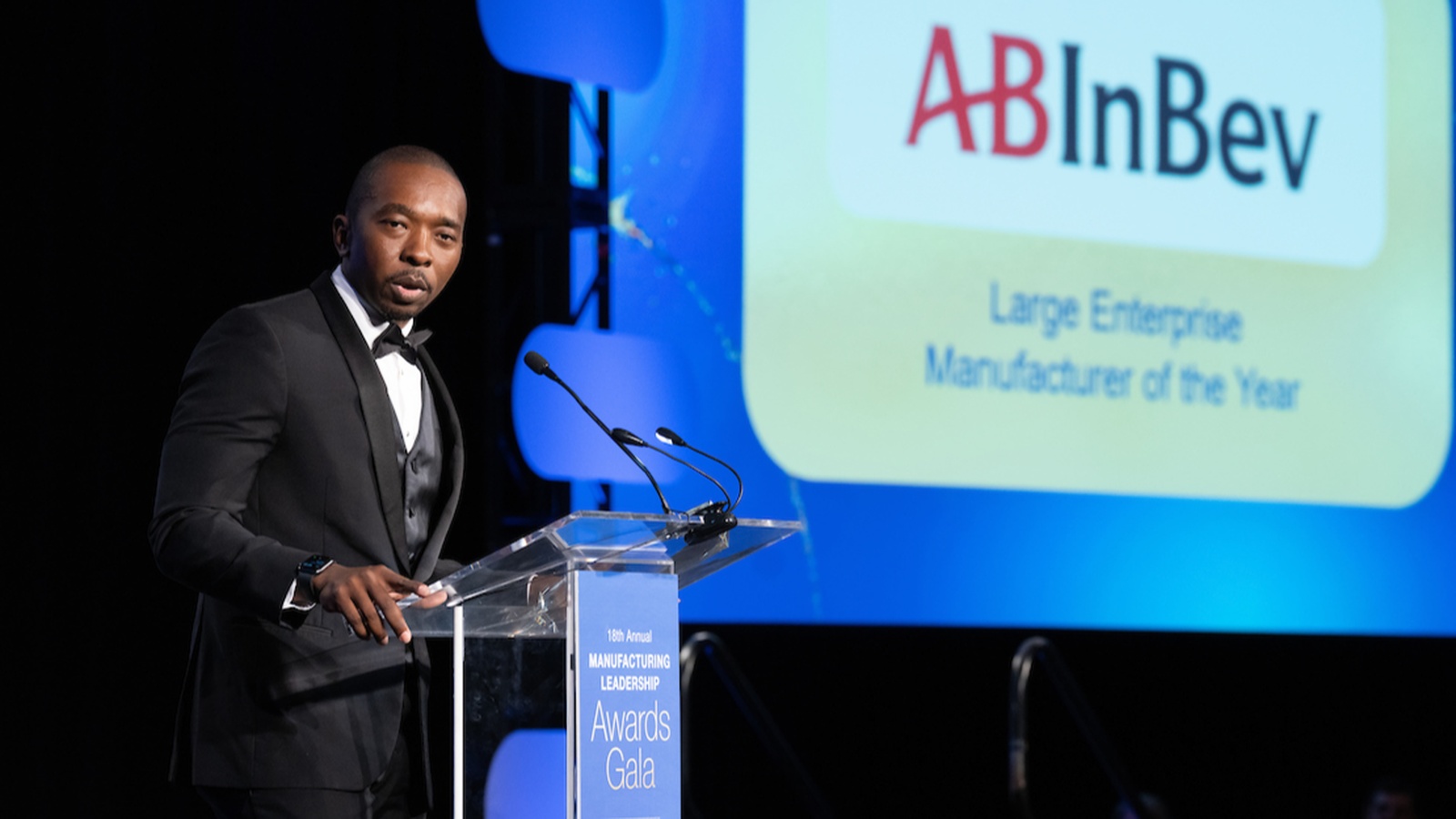
Anheuser-Busch InBev recently got to raise a toast to its team members—not just once, but four times.
After being named a 2022 Manufacturing Leadership Awards Gala winner in three categories—AI and Machine Learning, Digital Network Connectivity and Operational Excellence—the company took home the ultimate prize: the MLC’s Large Enterprise Manufacturer of the Year. (The MLC is the NAM’s digital transformation partner.)
Recipe for success: What’s brewing in AB InBev’s recipe for success? According to Global Vice President of Engineering and Operations Marcelo Ribeiro, a focus on world-class performance in all of the company’s operations.
- This means leveraging disruptive technologies and empowering frontline teams to drive sustainable and reliable performance, all with the dream of “to create a future with more cheers.”
Utilizing AI: One of AB InBev’s award-winning projects was its innovative use of AI to improve utilities performance. The company implemented a set of smart algorithms to optimize the performance of its air compressors and boilers, giving managers and operators a real-time, utilities-performance dashboard that alerted them when a target was not being hit.
- Started as a pilot in just five breweries, the project was so successful, the company rolled it out to more than 30 other breweries worldwide.
- AB InBev plans to expand the algorithm beyond boilers and compressors to provide utilities usage forecasts and prediction models.
Preventing downtime: Another AB InBev winner was the firm’s approach to attaining 100% reliability and optimization of all equipment and processes. This led to the development of a tool that monitors equipment performance and prescribes maintenance actions, both of which minimize downtime.
- The company’s ambitious reliability goal also creates safer working conditions in breweries and maximizes sustainability by reducing consumption of raw materials, packaging and spare parts.
Lessons on digital transformation: While technology can provide solutions to problems, resist the urge to simply “do” technology for technology’s sake, Ribeiro cautioned. First identify a problem, then determine how technology can help fix it. Don’t work the other way around.
- “One thing we have learned in recent years is that future is becoming less predictable,” Ribeiro said. “Manufacturing needs to create an ecosystem in the future where we can learn from each other. And we have to actually enable that to happen as becoming more resilient will require building a collaborative ecosystem.”
Nominations are being accepted now for the 2023 Manufacturing Leadership Awards. Find complete details here.
Operating on Sunshine: Sealed Air Invests Big in Solar

For Sealed Air Corporation, the $1 million annual savings it will realize from its recent investment in an 11-acre solar farm is just a perk that goes along with doing what’s right.
Toward a goal: “We always have sustainability in mind with everything that we do, whether it is a new product or a new facility,” said Sealed Air President of the Americas Tobias Grasso. “We always ask, ‘What is this bringing to us?’ and ‘How is this advancing our mission to leave our world better than we found it?’ Because we have a stated goal to be net-zero carbon neutral in our operations by 2040, we want to make sure that all our investments are in line with that strategy.”
- Earlier this year, a $9 million solar installation at Sealed Air’s Madera, California, manufacturing facility began generating electricity—at a rate capable of fulfilling 98% of the plant’s electricity needs, according to company calculations.
- The solar farm is integrated into the legacy power system so that system has a backup energy source when needed.
The right site: Sealed Air, the maker of the iconic Bubble Wrap® original cushioning and numerous other automation, packaging and digital printing solutions, started making plans for the 8,975-solar-panel farm in 2020. It chose the Madera location as the site for several reasons.
- “We have fairly extensive energy needs for that facility,” Grasso said. “And we had the available land and a good number of hours [of available sunlight] to provide the solar energy.”
- The manufacturer partnered locally with a team from TotalEnergies—a French company that recently acquired SunPower Commercial and Industrial Solutions—on the project.
The impact: Though the company got its solar installation up and running in less than two years, its effect on the environment will be long-lasting and far-reaching.
- The solar panels will prevent 5,000 metric tons of carbon dioxide emissions in just their first year in operation.
- Over the course of 15 years, that’s the greenhouse gas emissions equivalent of driving 15,000 cars for one year, Grasso said.
Solar-power advice: Manufacturers with the right energy needs, land and daily hours of sunlight could benefit from investment in their own solar installations, according to Grasso.
“First, you have to look at the dimensionality of your power needs; you have to look at the economics,” he said. “It’s a good idea to have a partner like TotalEnergies because they can help you through their experience so you model it the right way.”
Manufacturers Renew Call for Action on Immigration
NAM CEO says broken system is harming manufacturers’ competitiveness
Washington, D.C. – National Association of Manufacturers President and CEO Jay Timmons addressed the Minnesota Chamber of Commerce’s Manufacturers’ Summit today, where he made another call for policymakers to act on immigration, saying it is time to “fix this problem now.” Timmons called on Congress to act in the year-end government funding bill. His remarks come as the NAM rereleased its immigration proposal “A Way Forward.”
Excerpts from Timmons’ speech:
“First and foremost, this is a humanitarian issue. We see it play out in tragic ways—including family separations at the border and confusion as families seek to reunite following a harrowing journey.”
“But as manufacturing and business leaders, we also know there are serious economic consequences. Research and development—the cornerstone of innovation and our industry’s success—depends on access to the best and brightest from across the world.”
“The broken immigration status quo is also preventing us from growing our talent pool, leaving jobs unfilled. There are around six job seekers for every 10 job openings in the U.S., and our population growth is slowing. Last year, the U.S. population grew at its slowest rate ever.”
“Last year’s infrastructure law and this year’s CHIPS and Science Act prove that Congress can still get bipartisan things done—and immigration should be next on the list, whether it’s one bill or multiple bills. We would absolutely support a long-term, comprehensive legislative fix that addresses all of these issues, but we also want to be realists. We have a workforce crisis that needs to be addressed now, so let’s take action where we can. We want to focus on the art of the possible. One approach would be to address some of these issues in the year-end government funding bill.”
First released in 2019 and updated to reflect current challenges, the NAM’s “A Way Forward” proposal identifies seven core areas of action for Congress and the administration to take:
- Strengthen border security through physical infrastructure and best-in-class technology.
- Prioritize America’s workforce needs through reforms to the legal immigration system.
- Reform nonimmigrant visas and temporary worker programs to reflect employer needs, including a fund to support STEM programs so that we can reduce the need for these types of visas in the future.
- Provide a permanent and compassionate solution for populations facing uncertainty, including the Dreamers, who were brought here as children and know no other home.
- Reform asylum and refugee programs for a more orderly and humane system, including asylum standards consistent with our values.
- Fix the problem of the unauthorized population with a firm reset, requiring an orderly process of review, including financial penalties for those who seek to become legal and deportation for those who choose to stay in the shadows.
- Strengthen the rule of law so that it is respected and followed by all, with a focus on gang violence and also on requiring localities to cooperate to advance the enforcement of immigration priorities.
View “A Way Forward” in full here.
-NAM-
The National Association of Manufacturers is the largest manufacturing association in the United States, representing small and large manufacturers in every industrial sector and in all 50 states. Manufacturing employs more than 12.8 million men and women, contributes $2.77 trillion to the U.S. economy annually and accounts for 58% of private-sector research and development. The NAM is the powerful voice of the manufacturing community and the leading advocate for a policy agenda that helps manufacturers compete in the global economy and create jobs across the United States. For more information about the NAM or to follow us on Twitter and Facebook, please visit www.nam.org
New NAM Board Members to Bolster Manufacturing Competitiveness
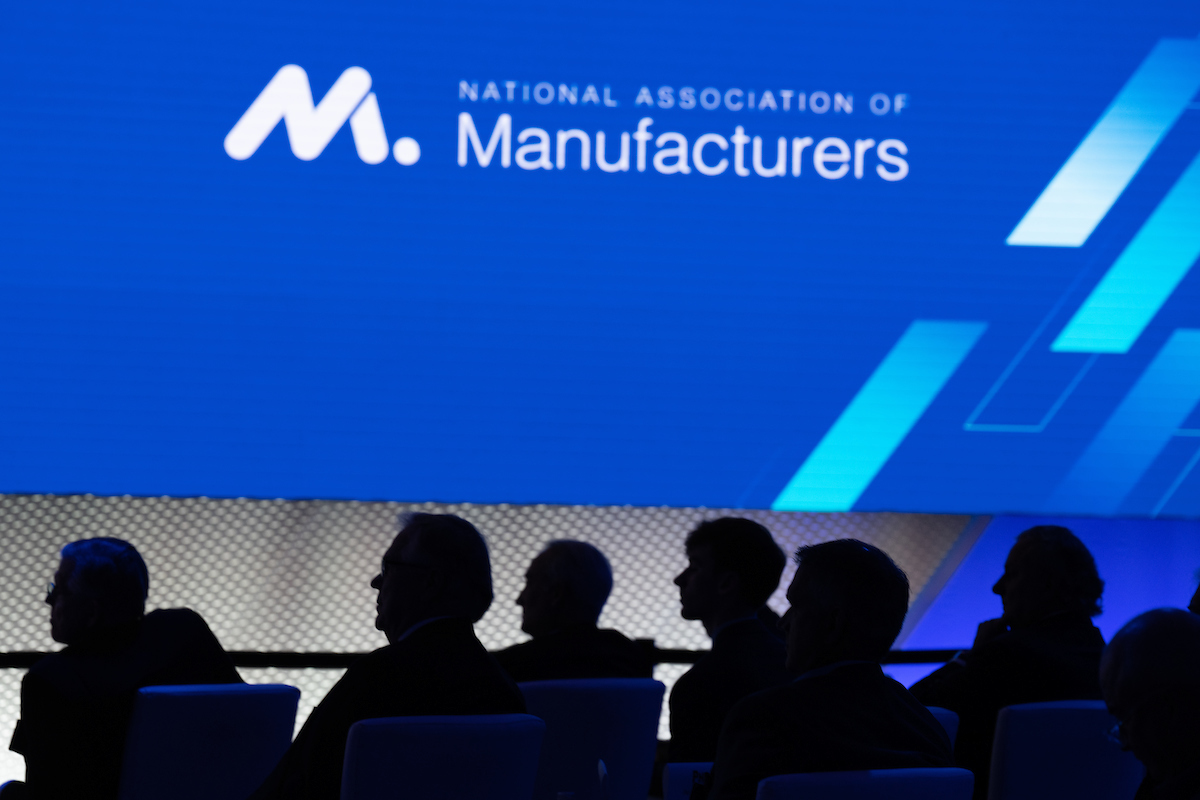
The NAM is constantly working to support and strengthen the men and women who make things in America. That mission is upheld by outstanding members of the NAM Board of Directors and their commitment to promoting the industry’s competitiveness on the global stage—a goal laid out in the NAM’s “Competing to Win” agenda.
Welcoming new faces: A number of new members have been elected to the board and will begin their two-year terms in January. They come from many sectors of the industry and companies both large and small, holding an array of leadership roles and boasting a wide range of experience. All of them are dedicated to ensuring that manufacturers in the U.S. have the tools they need to prosper.
The new members include the following:
- Edward Blair, president, Lutron Electronics Co., Inc.
- Sara Beth Burton, senior vice president, global supply chain, Hallmark Cards, Inc.
- Richard Cammarano, president and chief executive officer, Tech-Etch, Incorporated
- Karl Ehemann, vice president, global manufacturing and quality, Corning Incorporated
- Ed Elkins, executive vice president and chief marketing officer, Norfolk Southern Corporation
- Cynthia Farrer, senior vice president, global operations and integrated supply chain, Allegion plc
- Aimee Gregg, vice president and general manager, containerboard and recycling, International Paper
- John Hartner, founder, Digital Industrialist LLC
- Christopher Kastner, president and chief executive officer, Huntington Ingalls Industries
- Ram Krishnan, executive vice president and chief operating officer, Emerson
- Reece Kurtenbach, chief executive officer and president, Daktronics, Inc.
- Rose Lee, president and chief executive officer, Cornerstone Building Brands
- Thomas Long, co-chief executive officer, Energy Transfer LP
- Michael McGarry, chairman and chief executive officer, PPG
- Lori Miles-Olund, president, Miles Fiberglass & Composites, Inc.
- Christopher Perkins, president North America and senior vice president Taste & Beyond North America, Firmenich, Inc.
- Kimberly Ryan, president and chief executive officer, Hillenbrand, Inc.
- Karin Shanahan, executive vice president, global product development and supply, Bristol-Myers Squibb Company
- Matt Shields, senior vice president, global animal health manufacturing, Merck & Co., Inc.
- Sachin Shivaram, chief executive officer, Wisconsin Aluminum Foundry
- Shruti Singhal, chief executive officer, Chroma Color Corporation
- Mark Smucker, president and chief executive officer, The J.M. Smucker Company
- Matt Wood, national industry leader, commercial products practice, FORVIS
- Brent Yeagy, president and chief executive officer, Wabash
- Renée Zemljak, executive vice president, midstream, marketing & fundamentals, Ovintiv USA Inc.
What we’re saying: “The diverse backgrounds of our new board members, and their varied experience across many manufacturing sectors, make their counsel invaluable to the NAM in its efforts to bolster the industry’s competitiveness,” said NAM Chief of Staff Alyssa Shooshan. “We are counting on their insights and dedication to help steer manufacturers through this turbulent time and into a position of even greater strength.”
Manufacturers Help Hurricane-Hit Communities

Hurricane Ian’s devastating landfall in Florida Wednesday afternoon marked the second significant storm to hit the U.S. and territories in less than two weeks. But as is usually the case when catastrophe strikes, manufacturers are already among those leading the charge to help the communities affected.
Manufacturers mobilize: In Puerto Rico, where approximately one-third of all residents remain without power following Hurricane Fiona Sept. 18, manufacturers including Dow, UPS, Coca-Cola, Ecolab and Toyota are funding product donations across the island through NAM partners Good360 and SBP.
What’s happening: These NAM partner organizations are providing on-the-ground updates and working to get products where they’re needed most. Items of greatest need include:
- Solar-powered power generators;
- Nonperishable foods and ready-to-eat meals;
- Mold remediation products;
- Oxygen tanks;
- Hygiene kits and supplies;
- Drinking water;
- New clothing; and
- School supplies.
Meanwhile, the work is just beginning in Florida to respond to Hurricane Ian, with anticipated items including drinking water, nonperishable foods, hygiene kits, tarps, blankets and mold remediation products.
NAM in action: The NAM’s Emergency Response Committee is an employee-led, volunteer group that works year-round with nonprofit partners, including Good360, SBP and Project HOPE, to provide NAM members with disaster-preparedness resources and training.
- These resources, which include e-learning modules, fact sheets and webinars, enable manufacturers to support their employees ahead of, during and in the aftermath of disasters.
- The NAM’s ERC also helps manufacturers activate to aid their communities when disaster strikes—and it works to identify and highlight members that are leading this critical work.
Be prepared: In a webinar sponsored by the NAM’s ERC, Amanda Gallina, SBP community engagement manager, and Matt Woodruff, vice president of public and government affairs for Texas-based tank barge operator Kirby Corporation, gave their suggestions for hurricane preparation.
For businesses: Woodruff provided some commonsense advice for employers:
- Have a plan: Have a hurricane-preparedness plan and ensure that all employees understand it—before hurricane season starts.
- Make a list: Create a checklist of tasks that must be done during the season, starting with the first day.
- Set up: Create and offer remote work sites for affected communities and employees.
- Support: Provide support to the families of employees who live in disaster-hit areas.
The last word: “The NAM stands ready to provide resources and support for its manufacturing members and the communities in which they operate in all conditions,” said NAM Director of Member and Board Relations Isabelle Powell.
- “We urge members to contact their membership directors with questions on how to better prepare their team or support people in their communities.”
For more information on manufacturer disaster preparedness or to be added to the NAM’s ERC mailing list, please email [email protected].
Lincoln Electric Tour Showcases Innovation
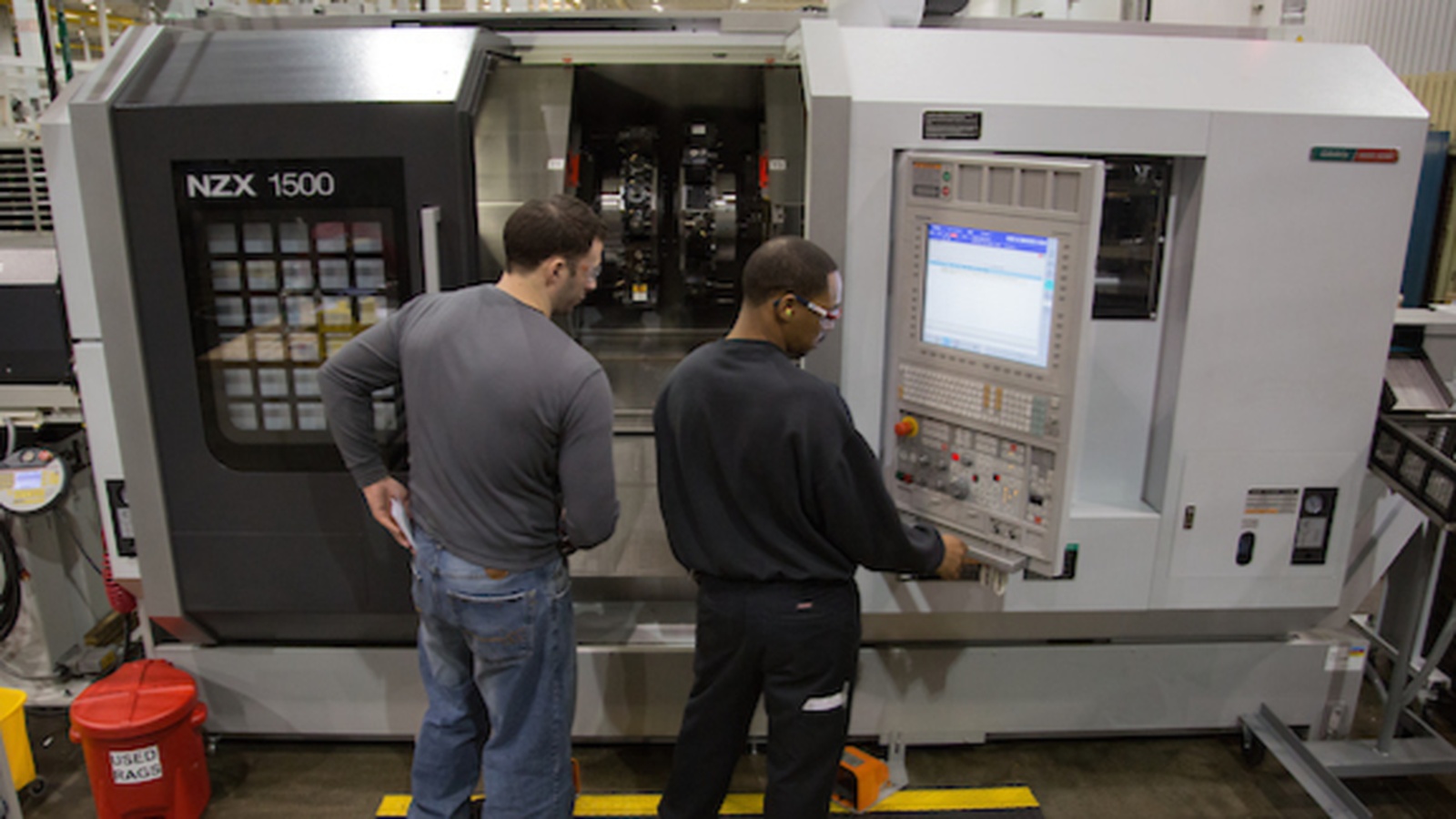
A word of caution about the Manufacturing Leadership Council’s plant tours: Attending one could make you rethink your manufacturing operations.
Inspiration abounds: The MLC, the digital transformation arm of the NAM, recently hosted a plant tour of Lincoln Electric’s headquarters in Cleveland. Inspired by the innovation on display, one attendee vowed “to go back to my own company and start asking what’s stopping us from implementing similar technologies and practices.”
- The two-day Lincoln Electric event included visits to the company’s welding and training center, its machine division, its 3D printing facility and its automation-solutions center.
- Tour participants also learned how the business is overcoming workforce shortages through culture and technology solutions.
What is Lincoln Electric? Lincoln Electric was founded in 1895 as an electric-motors manufacturer. Today it is a global industry leader in welding equipment and consumables, additive manufacturing and automation solutions. The company has locations in 19 countries and serves customers in more than 160.
Welding school: The first stop on the tour was Lincoln Electric’s world-class welding school, first opened in 1917 and relaunched in 2018 as the 130,000-square-foot Welding Technology & Training Center.
- Students at this state-of-the-art facility begin their training at virtual welding stations before moving to one of 150 training booths to use the real “arc.”
- Lincoln Electric also offers virtual classes, a turnkey curriculum for customers and “train the trainer” courses for welding instructors.
3D printing: Tour participants also got a look at the company’s Additive Solutions Center, the largest platform of its kind, which boasts 18 3D printing cells. It serves customers in the automotive, aerospace, marine and energy industries.
- The equipment prints replacement parts, molds, tooling and prototypes measuring up to eight feet long and weighing more than 8,000 pounds.
- It can print in a variety of metals, including mild steel, stainless steel, nickel alloys, bronze and Inconel.
Automation solutions: The Automation Solutions Center tour stop demonstrated Lincoln Electric’s twin answers to the manufacturing skills gap: innovation and tech solutions that increase productivity.
- The technology on offer includes automated arc welding products, collaborative robots, metal fabrication and assembly line solutions.
- Demand for Lincoln Electric’s collaborative robots is up as manufacturers cope with workforce shortages, tour participants learned.
High-performance culture: Tour attendees also learned about Lincoln Electric’s high-performance culture, which rewards success and provides employees with opportunities for growth and development.
- The company’s Incentive Management System for the production workforce includes output-based pay to maximize personal earnings potential, an annual profit-sharing bonus, a no-layoffs policy and an open-door policy.
- “I found the networking time to be highly valuable and came away with several ideas on employee retention,” said a tour participant.
Future focus: Looking ahead, Lincoln Electric leadership said the company’s core focus must and will be on its people—to continue to build a pipeline of talent and attract and develop the next generation of leaders.
How to Get the Most Out of R&D
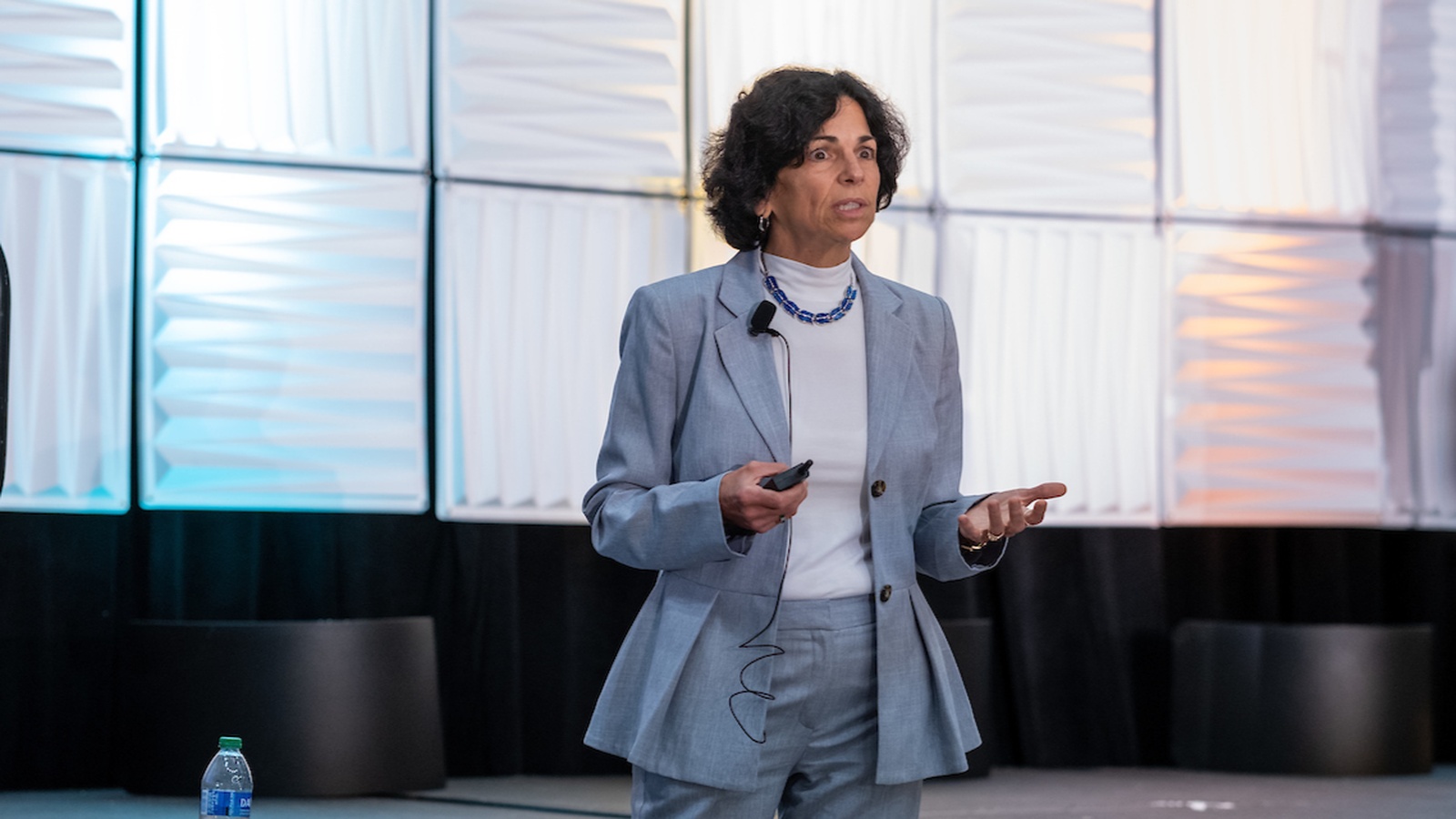
How should companies design R&D teams and processes to create the best possible results? That’s the challenge that Babson College Professor of Innovation Management Gina O’Connor addressed in her talk at the Innovation Research Interchange’s annual conference back in June. The IRI is a division of the NAM that advances the field of innovation management by creating contemporary practices—in R&D and many other areas.
A common problem: In an extensive research project at Babson College, O’Connor worked with experts from Goodyear, Synthomer and Diageo to study companies and decipher best R&D practices. She noticed a recurring theme: R&D professionals were being used by companies to solve urgent technical issues rather than to discover and invent.
- “In many organizations R&D has this feeling of being an order taker and of having to solve problems that are finely tuned and narrowly scoped,” said O’Connor. “That erodes confidence—and eroded confidence reduces empowerment.”
Empowerment and autonomy: O’Connor described empowerment as the authority to determine which projects and initiatives to take on and what problems to tackle. Meanwhile, autonomy refers to the authority to make final decisions.
- So, what do R&D professionals need? According to O’Connor, most want a moderate amount of empowerment, but not complete control over what to do.
- “We want to make sure that there’s organizational commitment somewhere associated with what we are doing, but we don’t just want to be told what to do,” as she put it.
So, what works? O’Connor explained that organizations with structureless R&D systems often had erratic decision making, sudden disruptions and unexpected changes in direction that left employees feeling powerless.
- Similarly, organizations with R&D processes that were too formal were also alienating to employees, who felt there wasn’t any room for flexibility or discussion.
- In contrast, the best systems included strong project leaders, consistent back and forth between the R&D group and organizational leadership, constructive communication, clearly outlined goals and trust in employees.
A last piece of advice: Training and developing project leaders is among the most essential steps in achieving successful R&D, said O’Connor.
- “What you need to be doing as a team leader every day is checking in with every member of your team, seeing what they need, where they are, what has happened,” said O’Connor. “It has to be an interactive, interpersonal kind of a thing.”
Learn more: Head on over to the IRI website to check out more of its programs and events.
Manufacturers Are Getting Tough on Cybersecurity

More companies are taking a disciplined approach to the growing threat of cyber attacks, according to a new cybersecurity survey from the Manufacturing Leadership Council. The MLC is the digital transformation arm of the NAM.
- The survey, which included input from 160 companies, indicates a dramatic change in how seriously manufacturers consider cyber threats compared to 2018, when the MLC last conducted the same survey.
Who’s prepared: Nearly 62% of manufacturing companies say they have a formal cybersecurity plan in place, according to the survey.
- That’s up from 2018, when barely 33% of manufacturers indicated they had devised and adopted formal cybersecurity plans that encompassed their plant floors.
- Nearly 40% of respondents said they had a high level of confidence in their internal cyber expertise, compared with just 25% who expressed such certainty in 2018.
More attacks expected: Yet even as better cybersecurity strategies are put in place, nearly 79% of survey respondents said they expect more attacks in the next year.
- That figure is up from 64% in 2018.
- The most frequently cited reasons for this prediction are increased levels of cyber crime and cyber terrorism and greater connectivity in manufacturers’ operations.
The effects on digital transformation: More than half the survey respondents expressed concern that cybersecurity issues could affect the speed and scope of digital transformation.
- 14% said cybersecurity could be a major obstacle in the next five years, with another 40% describing it as “an issue of concern.”
- Close to half—43%—said they consider cyber a part of doing business in a digitally transformed world.
Proactive measures: More manufacturers are taking advantage of publicly available safeguards, such as the NIST Cybersecurity Framework, to underpin their strategies.
- Nearly 58% of respondents said they have adopted the NIST framework, up from 48% in 2018.
- 45% said they have cyber insurance, compared to the 18% that said they had it in 2018.
The coming challenge: In the past four years, manufacturers have made significant strides to combat the growing problem of cyber attacks against the industry.
- However, manufacturers will need to stay a step ahead of cyber criminals as the number and sophistication of attacks increases.
See the survey: Review the survey findings for an in-depth look at how manufacturing leaders are thinking about cybersecurity in manufacturing’s digital era.
Get help: NAM Cyber Cover was designed specifically to provide enhanced risk mitigation and protection for manufacturers and their supply chains. Find out more at www.namcybercover.com.
How to Protect Your Company’s IP
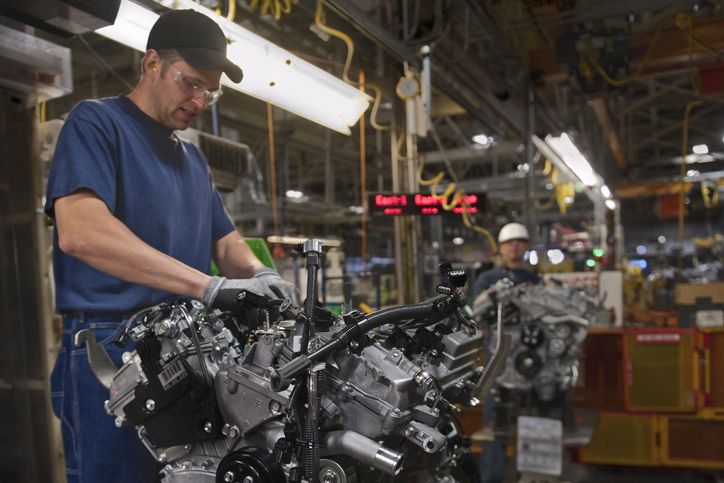
Safeguarding intellectual property is possible even when patents are not stringently enforced, according to James Nebus, associate professor and chair of the business department at Suffolk University’s Sawyer School of Business. He discussed the topic at this year’s annual Innovation Research Interchange conference back in June. The IRI is a division of the NAM dedicated to advancing innovation management and creating best practices in the industry.
Protecting IP: In his keynote speech, Nebus outlined several actions taken by well-known companies to defend against patent infringement in “weak-enforcement countries.”
Raise barriers: One of the most successful strategies was raising the barrier to imitation, Nebus said. Companies that have used this method to guard against what Nebus called “product knowledge leakage” include DuPont and Dow. They have taken the following steps:
- Installed information technology defensive shields.
- Appointed trade secret managers.
- Conducted employee IP training.
Try a different barrier: Another way that companies have kept imitators at bay is to “bundle imitable products with complementary inimitable products,” according to Nebus.
- This is a strategy IBM began to employ many years ago. “When computer hardware first became a commodity, IBM … transformed themselves from a computer hardware company to a solutions and services company,” Nebus said.
- “And by doing that, they changed the parameters of the customer ‘buy decision’ from the price of the hardware to the value of the solution to their business.”
Advanced manufacturing: Another way to raise the “barrier to commercialization,” as Nebus calls it, is to use advanced manufacturing techniques that are not easily copied.
- Apple Inc. did this well in 2008, when it came out with its ultra-light, ultra-thin MacBook Air to compete with lower-cost Asian PC vendors, Nebus said.
- “The packaging technology that enabled that design … started with CNC, computer numerically controlled milling process, which at that time was really used for low-volume prototypes. They invested in manufacturing R&D to transform that process … to high-volume production,” he explained.
- “The imitators really couldn’t make that big investment, so Apple separated themselves.”
Parting thoughts: Nebus ended his talk with three takeaways for the audience.
- First, “an effective strategy consists of implementing the protection mechanisms necessary to raise one of the barriers above the abilities of the imitator.”
- Second, companies may require different strategies for different countries, especially if some are developed and others are developing.
- Finally, companies should decide where to locate headquarters not just “on economic factors. [Remember] to take IP risks into consideration.”
Learn more: Head on over to the IRI website to check out more of its programs and events.
A Summer Reading List for Innovative Manufacturers
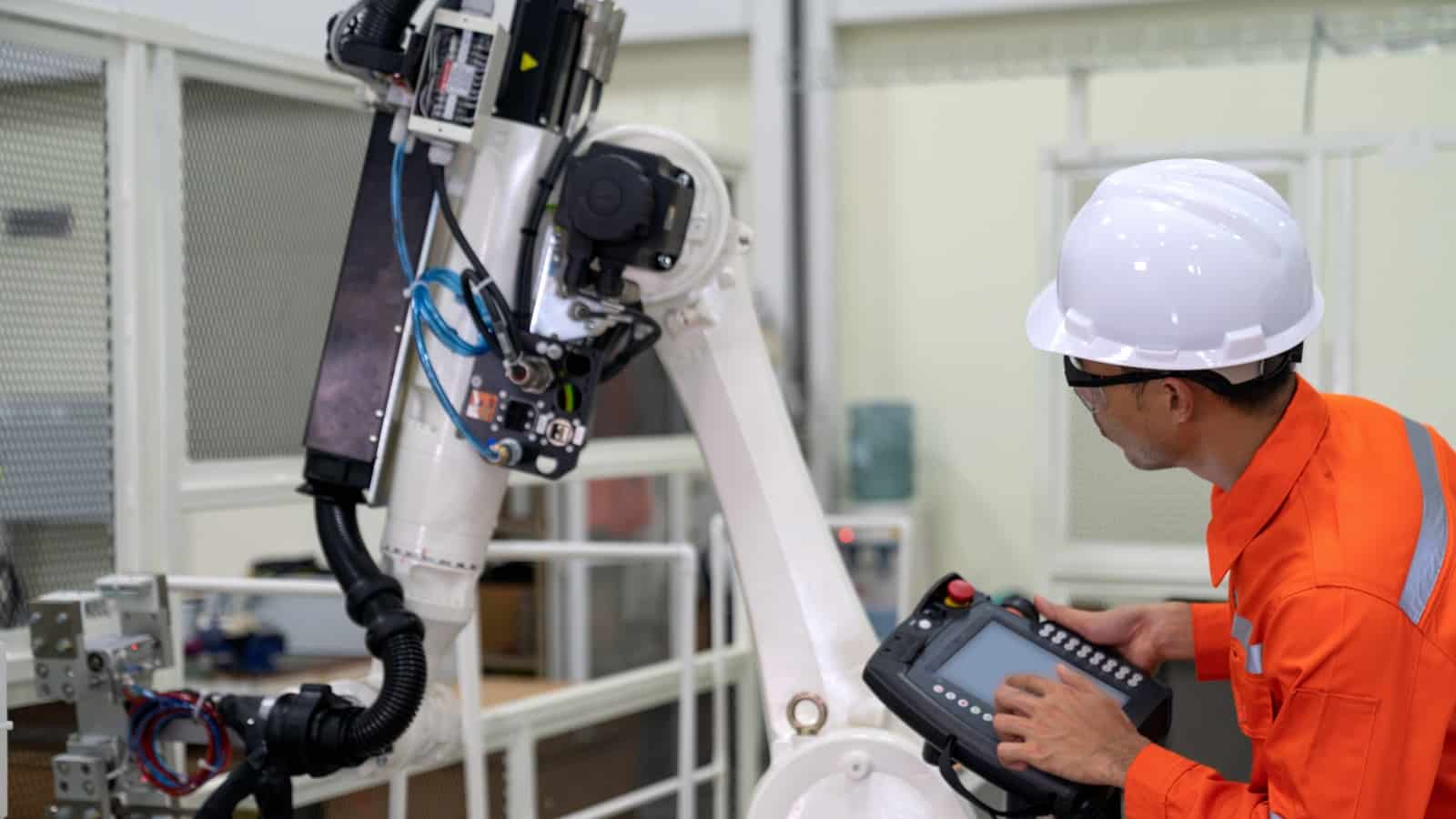
Heading to the beach? Take along the Manufacturing Leadership Council’s summer reading list to catch up on today’s top trends in digital manufacturing while you catch some rays. With these articles, you’ll discover new ideas, technologies and best practices to give your company a competitive edge.
Workforce: Leading the Way to Workforce Optimization. As digitization changes employees’ expectations of their employers, manufacturers must adapt. Examples include options for remote work, interactive training, agile and rapid collaboration platforms, career development, work-life balance and more.
Industrial automation: Camozzi’s Autonomous Vision. Successful autonomous manufacturing will depend on the fundamental relationship between humans and machines, says Camozzi Group CEO Lodovico Camozzi, whose company makes industrial machinery. In a recent interview with the MLC, Camozzi shared his view of manufacturing’s autonomous future, including:
- How advanced additive manufacturing approaches promise new production paradigms;
- The importance of collaboration in driving innovation and excellence; and,
- Why the industry must maintain a human focus in today’s digital world.
Cybersecurity: Ransomware Attacks Increasingly Targeting Manufacturers. Think your business is safe from hackers? Think again. Ransomware attacks against manufacturers are on the rise. All businesses should be on guard against cyber extortion, advises Peter Vescuso, vice president of marketing for industrial cybersecurity provider Dragos and a member of the MLC.
Supply chain: How Manufacturers Can Navigate Supply Chain Challenges.
As global supply chain woes, worker shortages and wage inflation challenges intensify, manufacturers everywhere want to know the best way to navigate them. In this article, a panel of industry experts shares top tips to sustainably and profitably overcome current obstacles.
Artificial Intelligence: AI Roadmap: How Manufacturers Can Amplify Intelligence with Artificial Intelligence. Artificial intelligence offers manufacturers a host of benefits, including better visibility into supply chains, insights from predictive analytics and the ability to quickly respond to unexpected changes in demand. A six-step road map can help manufacturers looking to integrate AI into their businesses.
5G: 5G Will Help Unlock M4.0’s Potential. 5G technology offers speed and capacity advantages to manufacturing companies. According to the MLC’s recent Transformative Technologies survey, 26% of manufacturers have already invested in 5G technology. More than half expect to invest or are considering investing in the technology over the next two years to take advantage of 5G’s benefits.
Sustainability: Overcoming Roadblocks to Advance Sustainability Programs.
The manufacturing industry is expected to improve its sustainability and keep leading the fight against climate change. However, making green changes to processes and procedures can be costly. To get the most bang out of their sustainability investments, manufacturers should focus on data-driven initiatives and indicators.
Looking for more digital manufacturing insights? Browse the Manufacturing Leadership Journal for additional information on technology, organizational structure and leadership in manufacturing’s digital era.
